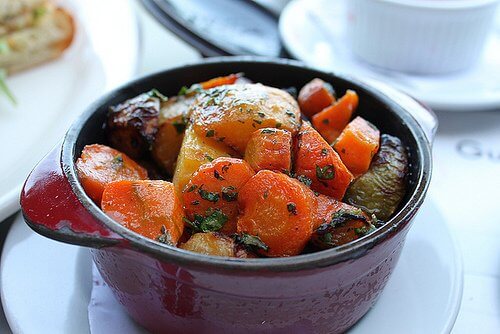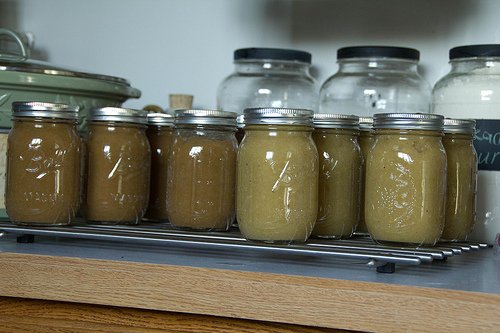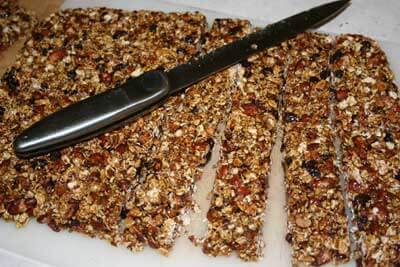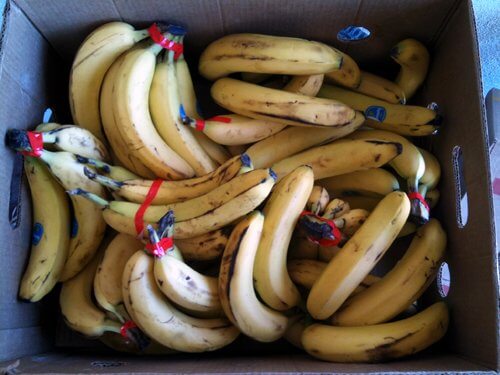How I Would Improve my $250 Grocery Budget Even More

If you haven’t yet read my initial post, What I Would Feed my Family on a Monthly Budget of $250, I would suggest going there first, and then coming back to this post.
First, Some Answers to Your Questions
1. No, this isn’t how we regularly eat. I did mention that in the other post, but I want to say it again for clarity. This is make-believe. Our usual grocery budget (which includes about $30-40 of household and toiletries) is $450, NOT $250. The point of doing this was to see IF I could do it and to figure out HOW I would do it, to challenge myself and to encourage and help those who are at a point where they don’t have the luxury of upping their budget. In the past, we did eat very similarly to this, but our budget has since been raised now that we are not as strapped as we were.
2. Does our family actually consume this little dairy? No. We would and could (and used to), but we don’t anymore. We drink or eat more like the equivalent of 1 gallon of dairy per week (in the form of raw milk, yogurt or kefir), not 1/2 a gallon as outlined in my budget. This is an option that we now have due to a higher budget, and we thoroughly enjoy it, plus I think it’s good for us. We also eat more cheese than the other budget contained (we eat 5-6 lbs per month, not 4), probably about the same amount of butter (4 lbs), and then also some extras like sour cream and cream.
3. What is flaxseed egg replacer and how do you use it? See this post for more details.
4. How would you do this when you have food allergies (like wheat or gluten), or when you’re on a special diet, like GAPS?
Here are a few helpful posts for those trying to cut costs when eating grain-free:
- Frugal Living with Food Sensitivities
- Building a Grain Free Pantry
- Using Four Frugal Foods from the Produce Section Creatively
Our family has eaten wheat free for many, many years and this is how I made it work on a tight budget— we would still eat the other grains I mentioned (oats, brown rice, rice pasta, etc.) plus starches like potatoes and sweet potatoes and squash. For bread, I made mostly sourdough with a combination of rye and kamut, and then also some yeasted breads using only kamut or sometimes adding other inexpensive flours like barley. I bought all of my grains in bulk from the food co-op that we order from to keep it cost effective. Of course, this would cost a bit more than the wheat flour I used as an example in my last post (25 lbs kamut for me, for example, is $19.55 and 25 lbs of rye is $11.65), but I saved money in other areas of the budget to help make it work.
For those who are gluten free, I would give you the same advice. Use different flours (brown rice, sorghum, millet, tapioca starch, etc.) and buy them in bulk, as well as the necessary extras like xanthan gum for binding. Make your own GF mixes to store in your pantry(never buy them- that makes it so much more expensive). You will probably spend even a bit more than I spent doing wheat-free, but it’s still do-able. I wish I had more and better suggestions for you, but we have rarely eaten gluten free, so I’m not particularly experienced in this issue. Perhaps you can help each other out in the comments?

Snacks
Several people asked me what we would eat for snacks on this budget. I’ll be honest in saying that it would be a struggle to eat decent snacks. Here are a few things that I would make:
- Granola bars
- Extra muffins
- Bread/toast or tortillas with butter or peanut butter
- Possibly cheese slices, if there was enough
- Any extra raw veggies or fruit that weren’t used in other meals (but I know there wouldn’t be a lot of leftovers)
That’s about it. And that’s not much. Which is why this budget needs to be better than it is, with more food and some extra variety.
And that’s exactly what I’m going to show you how to do right now…
All the Other Things I Would Do to Save More Money
My initial budget was based primarily on frugal eating and careful planning, which anyone can do. Now I’m going to share with you some of the many other techniques that you can use to find more room in that lean budget, buy better quality foods, and more of them.
Shop my local produce market
I love my produce market. For those local to me, I shop at 2 EE’s. They carry a mix of their own, locally-grown and either unsprayed or organic produce in season, and then they supplement this with other local produce, as well as plenty of imports for those who want them. My market in particular has great prices on most of their local and seasonal items, but I find that produce markets in general are MUCH cheaper than any conventional grocery store, and truthfully, I buy hardly any produce from regular stores.
Aside from their better prices on these local and seasonal items, I also purchase bulk cases at a discount. In my $250 scenario, I spent $4.98 on 5 lbs of apples. At my market, I could buy a 20 lb case for between $9-15 (between late summer and early spring, anyways), depending on the variety I chose. That’s a huge difference. I can also buy things like potatoes, carrots, onions, as well as seasonal fruit (apples and pears in fall and winter, tree fruits like peaches and plums in summer, plus tomatoes and cucumbers and peppers and all sorts of foods for preserving in summer as well), all in cases of at least 10 lbs and up to 50 lbs.
On a regular basis, I spend about $35-40 every two weeks at this market, shopping mostly seasonal foods or sales, a few discount items, and then a few things we just enjoy, and I walk away with 3-4 shopping bags stuffed with produce. The produce in my initial post cost $36.60. I could have spent the same or slightly more at the produce store and walked away with more and a better selection, especially if I…
Image from raw+peace+love
Buy From the Discount Shelf
I can’t tell you what a difference this makes. Did you know that most stores or markets have a cart or a section where they put fruits and vegetables that are very ripe or just starting to go bad, but still have plenty of life left?
We North Americans tend to have a fairly spoiled view of what “good” produce looks like. If a pepper starts to get a soft spot, we’re more likely to throw the whole thing out than to cut around the bad spot. If the lettuce has some bad looking pieces on the outside, we might be tempted to compost the whole head, instead of peeling off the bad parts until we get further in. Honestly, I think we’re way too picky and that’s why we waste so much food.
When I buy bags off of the discount shelf, I expect that I will cut away and throw out some part of the bag, but it’s usually minimal. I always look the bags over carefully before choosing which ones I want. There are a few things that I won’t buy discounted, because I know they are routinely not worth it (like already soft avocados- in my experience, more bad than good).
Overall, though, I pay at least 50% less (and often much cheaper) for produce that will still go a long ways. I have a friend who consistently buys the bulk of her produce from the discount shelves at various stores, and I know that she spends much less on produce than even I do (since I only buy some of mine this way, not all). I think that our family still eats a little more fresh produce overall and we enjoy more variety and choice, but their family certainly isn’t suffering in any way and they still eat an excellent, whole foods diet with fresh fruits and vegetables.
I know that discounted foods aren’t available absolutely everywhere- just yesterday someone was telling me that where they’re from in Illinois, they just don’t see these discounted items. But, they are available far more than you think. Ask the managers at the stores where you shop where they put discounted items or what days they mark them down. If you never see items already discounted, you can also just ask. Just because it isn’t marked down doesn’t mean it can’t be. Trust me on this.
Buy Other Discounted Items
Produce isn’t the only place to save in this regard. Many stores will also discount their dairy (yes, including organic or even raw), breads, meats, fish, eggs, and sometimes dry goods and regular grocery. Learn which stores do, learn how and when they mark them down, and then try to shop according to those patterns.
Don’t be afraid to buy near-expiry items. Unless they really don’t look good, they almost always are. Meat or fish can be used within a day or two, or frozen immediately. Same with milk, pasteurized or raw (and after being frozen, it’s still great for making yogurt or kefir, for baking, for pouring over cereal or oatmeal, etc.). Yogurt or other cultured dairy usually lasts far beyond the expiry date, as do eggs. Breads can also be frozen and taste just fine once thawed.

Image by bcmom
Use a Natural Foods Co-op or Bulk Store
Although there are sadly few of these in Canada (at least, not in the West where I live), I have found an excellent one that I can buy from and pick up just across the US border. I buy from a co-op called Azure Standard. This is, hands down, my most cost effective option for purchasing any sort of grains (whole or already ground into flour), dry beans and legumes, other baking staples, dried fruits, raw honey, among other things.
The beauty of food co-ops (or natural bulk-foods stores) is that they regularly offer foods in much larger quantities. I buy my dry beans in 5 lb bags, for example, instead of the piddly little 450g bags I used in the $250 scenario. Here’s the price difference:
Pinto Beans
- 5 lbs $6.25 (organic are just over $7)
- 450 g (just under 1 lb) $1.88
- 5 bags of 450g each (to equal 5 lbs) = $9.40
By buying in bulk, I am saving over $3. If I only want to save a little over $2, I can get organic instead. This makes a huge difference in your overall budget!
Take Advantage of Special Store Deals
The particular store that I used as the basis of my $250 budget actually runs a fantastic promotion each month. The first Monday and Tuesday of every month are Family Days. Depending on how much you spend ($25, $50, or $100) your discount goes up. When I spend $100, I save 15%.
In other words, I could have taken that $250 budget, and by buying at least $100 worth of it at the beginning of the month in one shopping trip, taken an immediate $15 off my total. That alone would give me the extra I needed to be able to buy more snack foods, or to help with extras like spices, yeast, baking soda, etc.
This is just one example of a store promotion. Every store is totally different. Maybe your store offers really excellent in-store coupons that you can use. Maybe you get a gift card back when you spend a certain dollar amount on particular days. If the store that you regularly shop at doesn’t offer promotions like this, see if you can find one that does and make the switch.

Image by jshontz
Include Home-Grown and Preserved Food
When I made that $250 budget, I did it from scratch, not including anything I already had in my house.
The truth of the matter is, I have jars and jars and jars of preserved foods up above my cupboards. Among them are:
- Apple sauce made with gleaned (free) apples
- Apple jelly (made with the same apples)
- Strawberry jam (made with cheap $1 jam berries bought in season)
- Peaches (I bought cases at the end of the peach season, for $0.60 per lb)
- Dried beans, zucchini and tomatoes (all free from the excess of my garden)
- Salsa (with my excess garden tomatoes, and discounted peppers and onions, made last summer)
I know, you’re not going to be growing or preserving much at this very moment (and neither am I). But winter is a great time to start thinking about what you might want to grow or preserve during this upcoming spring and summer season.
If these posts were written in summer, I could also include plenty of fresh produce from my garden that we would eat with meals and snacks, instead of needing to buy as much produce. Though I certainly don’t grow everything our family eats, even with a handful of garden boxes, a few containers and a very small in-ground plot, I grow enough that we only buy produce minimally during the growing season. I can’t think of a better way to include more fresh, nutrient-dense, organically-grown produce in a tight budget!
There’s So Much More to Say
Truly. I could ramble on about this subject all day (and I will just a little bit more, on Monday). Writing posts like these are so hard for me, because a post just feels so short and there’s so much more I want to say.
In fact, I did say it. I wrote an entire book on this topic in detail. It’s called Real Food on a Real Budget: How to Eat Healthy for Less.
If you want to really delve deeper into the details and techniques of cutting down your budget without compromising the quality of food that you eat, I think you’ll find it immensely helpful. If you want to focus first on learning to carefully think through and plan out your meals like I did in my initial $250 budget post, then you might want to start with my book Plan It, Don’t Panic: Everything You Need to Successfully Create and Use a Meal Plan.
What about you? What other types of techniques do you use to take a tight budget and stretch it even farther?







Thanks for these two great posts! Our budget is about $250-$300/month, so this is incredibly helpful. My daughter is gluten, egg, and dairy free, so it’s an extra battle for us. One snack I often make it black bean brownies. She LOVES them, and using beans makes them grain-free AND frugal.
how do you make your black bean brownies egg free? my girls are egg-free/dairy-free, too, but I’ve always wanted to make those! The recipe I have calls for SEVERAL eggs, though, and I wasn’t sure it was the sort of recipe worth experimenting with without eggs. 🙂
and thank you, Stephanie, for this post. I’m so thankful for my husband’s generosity with our food budget (eating good food matters more to him than me, even!), but am always wishing I could do it on less…I’m inspired to try again (well, once I finish my anti-candida diet…and when the whole clan isn’t grain-free, which is coming soon, now that I’ve successfully done it for a month). Beans are becoming my best friend in the kitchen, for sure! Produce is without fail what always kills my budget, and besides bananas, there isn’t much our local grocery store discounts…I’ll have to take your advice and ask!
For each egg you can use 1 Tablespoon flax meal mixed with 3 Tablespoons water. Let it sit for a minute and it will gel up like an egg.
I am excited to start my first garden this spring! Thanks for another great post!
Thanks, Stephanie, for a great post. I want to encourage your readers that what you shared can be done. We are feeding our family of eight on about $450 per month. That $450 usually includes toiletries. Occasionally we’ll have $500 for everything. By buying bulk, watching sales, and making everything from scratch (including all of our bread), we eat very well over all. We don’t get nearly as much vegetables as I would like during the winter since our garden isn’t growing. But we never go hungry and we eat pretty healthy for the most part. Granted, more money would make things easier, but it is doable.
Thanks for these last two posts. I’ve enjoyed them very much. I’ve already started re-vamping our food budget!
Hi! I feel like I am reading and linking to your blog so much I need to stop by and officially comment. Thanks for all your information! You definitely have a stand-out blog going here and I always look forward to your new posts. So, thank you!
-Sarah
What is a co-op?
A co-op is a membership-based store, where the prices are cheaper because of the collective buying power of the members. There are many health food stores that function this way, as well as different types of delivery services and buying clubs, where people purchase together in order to get prices closer to wholesale. I’m not even sure if the place that I buy from (Azure Standard) is technically a co-op or if they actually just function as a business, but I do have to be a membership and have to place minimum orders (no orders under $50). But generally, they are places where you can get bulk and natural foods for less, which makes them a wonderful find if there is one in your area. For those in the US, here is a good co-op directory- http://www.coopdirectory.org/directory.htm. I’ve had a hard time finding any decent directories for Canada (although this one I’ve linked to does include Ontario, one of the only places that seems to have anything).
It can depend, but usually a co-op (stands for cooperative) is a group of people getting together (sometimes formally, with rules for membership, and sometimes informally) to purchase products at a discount because they form a large enough group to qualify for wholesale prices with a retailer. They might also just order products in such bulk (because for instance, a seller only has large quantities available) that it would not be practical for one person to make such an order.
My mom belongs to a group of about 7 families that have contacted 5 different real foods wholesalers (such as Tropical Traditions) and obtained authorization (I don’t know how they did it) to get wholesale prices on their goods. They make orders once every two or three months and will divide up cases of goods or bulk flour, etc.
Stephanie mentioned Azure Standard as a co-op. I’ve never ordered from them, but I’ve looked over their website, and it looks like they organize their members, instead of their members organizing themselves (as my mom and her friends do). Azure Standard arranges prices, quantity, drop-off points, everything.
So I think those are the two kinds of co-ops that exist – one where the members directly organize themselves, and one where the co-op has employees that do the organizing for the purchasing members. (REI is actually a co-op too – who knew, huh?) I think the goal in every case is to eliminate the mark-up caused by shopping at a store.
Hope that helps!
Well, I’m redundant. Inept computer use – I didn’t see Stephanie’s much more helpful reply until after I posted mine. Sorry 🙂
I think these two posts have sparked a great deal of interesting discussion! I love reading posts like these. I just want to clarify though, in my comment last time, I did realize you were talking about a hypothetical budget, not your own family’s budget : ) I was just pointing out that grocery store cheese often contains modified milk ingredients (although sometimes not, just depends), and food like that shouldn’t really be part of a whole foods diet. But, having said that, there are cheap brands that don’t contain those ingredients, and would work for those on a truly strict budget, as you mentioned.
You’ve inspired me to check out your area for produce shopping, maybe once a month or so! Produce is very expensive in Vancouver, and I find farmer’s markets prices even higher than Whole Foods prices. I try to buy according to the dirty dozen/clean fifteen, but still, produce costs us a ton, and will cost us even more when we start GAPS soon. I wish the Costcos here carried organic produce like they do in many places in the States. But local produce is always better, of course.
As for raw honey, I have a place I get it from, near your area actually, and they sell it for $4/lb. I may have mentioned this before, but anyway, if you’re interested I can email you the info. I think local honey is much more beneficial than honey from further away! We generally buy a few gallons at a time. I used to get it from a ranch/farm up north, 45 lbs at a time, and this was the cheapest, but they stopped carrying it, so I was forced to look elsewhere.
Anyway, great posts!
great tips. we do most of the things you mentioned already and we do live on a tight food budget with 4 growing boys and another on the way!
i would add that planning meals both seasonally and starting with what you already have in the pantry and freezer helps a ton! soup is a great cheap and nutritious seasonal food for winter time, as is using lots of winter squash in all sorts of recipes. one tip i do to make chicken stock (the base for most our soups) for pennies is to save the tops/ bottoms i cut off onions, celery, and carrots when i use them for other meals, freeze them, and then pull out a handful when it is time to make stock. it is easy and uses what would have otherwise been waste.
some snacks we regularly eat are tortilla chips and bean dip (homemade corn tortillas, fried & homemade refried beans whizzed in the food processor and heated), toast (from homemade sourdough) with peanut butter, crackers & cream cheese (actually drained yogurt with chives or other seasonings), muffins, scones & tea, p & p rolls (leftover sourdough pancakes with peanut butter rolled up and eaten out-of-hand), … you get the idea, lots of homemade stuff, often repurposed ingredients or planned-overs from other meals.
It really is doable but it does take some planning ahead.
Love these posts! I second the tip of ASKING for produce discounts, even at the nicer chains that don’t do the discount bin. A few months ago, I noticed that many of the bunches of bananas at our store were getting brown spots. I asked the employee stocking if they’d consider discounting some of them. Without a word, he walked over to a shelf, grabbed a HUGE box (like the half bushel ones) and loaded it with every single bunch of bananas that had brown spots on them. Then he put a stick on the box that said $.69…for the ENTIRE BOX! Needless to say, I haven’t bought bananas for muffins or smoothies since!
Oh, and LOVE our produce market. Just bought 15 lbs of cabbage to do sauerkraut this weekend 🙂
I would love to know what some of you frugal families do for entertainment … eating out has always been one of those “fun” activities for us, but I know it’s been far too much on the budget.
Our issue, is that we are in a brand new city and we know no one. 🙁 Would love a post on frugal entertainment.
Game night, movie night (some libraries have movies for free), craft night. In nice weather – parks, bike rides, etc.
Corinne – Just a few ideas for you to make eating at home just as much fun as eating out:
– change up where you are eating. Have a picnic outside or one on the floor in the living room. Maybe with little kids, make a blanket fort and eat inside!
– change the setting. Break out the good china or fancy tablecloth. Light some candles and turn pasta night into fancy-italian-restaurant night!
– look for some “copycat” recipes for your favorite restaurant meals. One of my favorites is Red Lobster’s Cheddar Bay Biscuits. There are a lot of “copycat” recipes on the internet.
Love those ideas! Thank you ladies!! I used to do the copycats …hmmm, what happened? 😉
We just revised our “new” budget – until hubby gets a job – and we’re going to be at home except for a few Groupon deals I had already bought. 🙂 Luckily, the Boise area offers so much to do. Glad we’re here.
I’ve never heard of a produce market before! We do our own gardens, and in season, farmer’s markets… I will have to try and find a produce market in our area!
One tip I haven’t read that saves a LOT of money is having your husband be a hunter! 🙂 Hunting licenses aren’t that much ($25/year I think) and even if he only gets 2 deer and 1 boar/season… that is a LOT of meat. Many also go hunting for fowl. The meat is all organic, free range, and hormone free. Properly field-dressing, aging it and being a good shot (so that the animal dies quickly and doesn’t shoot adrenaline through the meat) make the gamy-taste almost non-existent (though I’ve even used meat that was more gamy and seasoned it in ways that it still tasted great). You can process it yourself or find a local butcher who will do it for you at a reasonable cost– enter the world of steaks, sausages, bacon, soup bones (and antlers), etc. YUMMMY!!! My uncle & cousins are excellent hunters and keep us all well-supplied, as well as being extremely hospitable.
oh, and if you don’t hunt but know a hunter, you could offer to barter services like lawn care, baby-sitting, or web-design skills for meat.
Stephanie, wondering if you have a specific list of what you buy from Azure? I know some things are fabulously priced, but just wondering if you have a stock list. Inquiring minds want to know….
Thanks!
You can create an account on Azure to look at prices. I’ve found that flour, honey, dry beans and some produce are better prices than what I can find locally. This seems to match up with what Stephanie mentioned above.
Living in WA state, we’re able to order from Azure Standard, as well. We raise laying chickens and most of what I buy is for them: chicken wheat, split peas, lentils, rice, oats. I buy our bulk hard and soft wheat there as well as non-irradiated spices in bulk. Popcorn (organic), molasses, maple syrup, raw honey, peanut butter, Ezekiel products (for us, tortillas).
Do set up an account with them, then you’re able to see the prices. You can save items as ‘favorites’ and then just view your favorites to check totals.
Snacks? How about popcorn?
Yes, popcorn is a great, cheap snack! Even buying organic doesn’t make it much more expensive and kids love it, of course.
This is a great post, I love it! I’ve always wanted to be a homemaker, and plan to be once I find a bread-winner. 😛 Currently, I’m single (and childless) and work full time, trying to fit in homemakery things in my free time, but that can be challenging. Also, I eat small portion sizes, so what one person may eat in one meal I eat all week (for dinner, I mean). I have limited storage space, limited fridge space, and am gluten and dairy free. I end up buying a lot of foods that are more prepared just so I have more manageable amounts to work with, and they are easy to prepare quickly after being at work all day (I generally bring all my food to work, too, so I make all my food for the day at once). Do you have any tips for someone in my position (one person eating small portions and desiring variety) for eating whole food frugally?
Thanks for posting this. Though I do not make much food from scratch, I do watch for the rotation of staple products at our store and buy up when they are on sale. I do use coupons sometimes only if it is a product we normally use. I do not buy store or cheaper brands for some prooducts because it will sit uneaten and wasted. I am not a horder but can get a meal on the table to feed the drop in guests my kids occasionally have. I never buy meat unless it is on sale 2 for 1 or yellow sticker for “old” but still good.
I do see from your sggestions more areas I can save. I am finding it ironic that many of the ways my mom shopped and planned meals when we were all younger are now the new thing to inform and teach younger women about. She was a depression child and hated waste! Now, even at my age (60) I am still happy to have tips!
Lots of great advice! I will have to sift through it & see what I can implement around here. I haven’t see those discount sections at my grocery stores & the farmer’s markets don’t always have inexpensive produce. We are on the GAPS diet & are dairy-free. My son is allergic to peanuts, so I usually don’t make things with nuts (I hate having to make separate dishes for everyone & I don’t want to risk contamination) but I keep nuts whole for the rest of us. It has increased the amount I spend a week significantly & I can use all the help I can get! Thanks!!
Thanks for another great post, filled with ideas and inspiration!
Snacking is a difficult one on a tight budget. But we’ve been able to make it work for 25 years.
I bake a large batch of corn muffins each week and put them in the freezer. These are used for snacking. I like using corn muffins for snacking, as they’re not very sugary.
Also, about once per week I make a big batch of either refried beans or a bean-based sandwich spread, like a super simple Black Bean Sandwich Spread (basically it’s cooked black beans pureed in the food processor with homemade salsa, olive oil and a pinch of salt). Anyone who is hungry can make themselves a quick snack of bread or homemade tortilla with beans or bean sandwich spread.
I pop a lot of popcorn. I buy 12.5 lb bags from the restaurant supply and pop in oil in a pan on the stove.
And there’s always a jar of homemade granola on the counter for snacking on.
Plus, there’s always cinnamon toast, for someone with a sweet tooth.
With regards to dietary restrictions, I can’t have dairy. I do buy soy milk each month. But when I run out I make my own rice milk from brown rice. I even use rice milk in half and half proportions with dairy milk, for my kids and husband when we’re about out of milk and I won’t be getting to a store for a few days. I shop a couple of stores’ dairy sections for marked down milk. When I find some, I buy whatever they have, bring home and freeze. The big thrill is when I find whole milk on clearance, as I bring it home to make yogurt for the family.